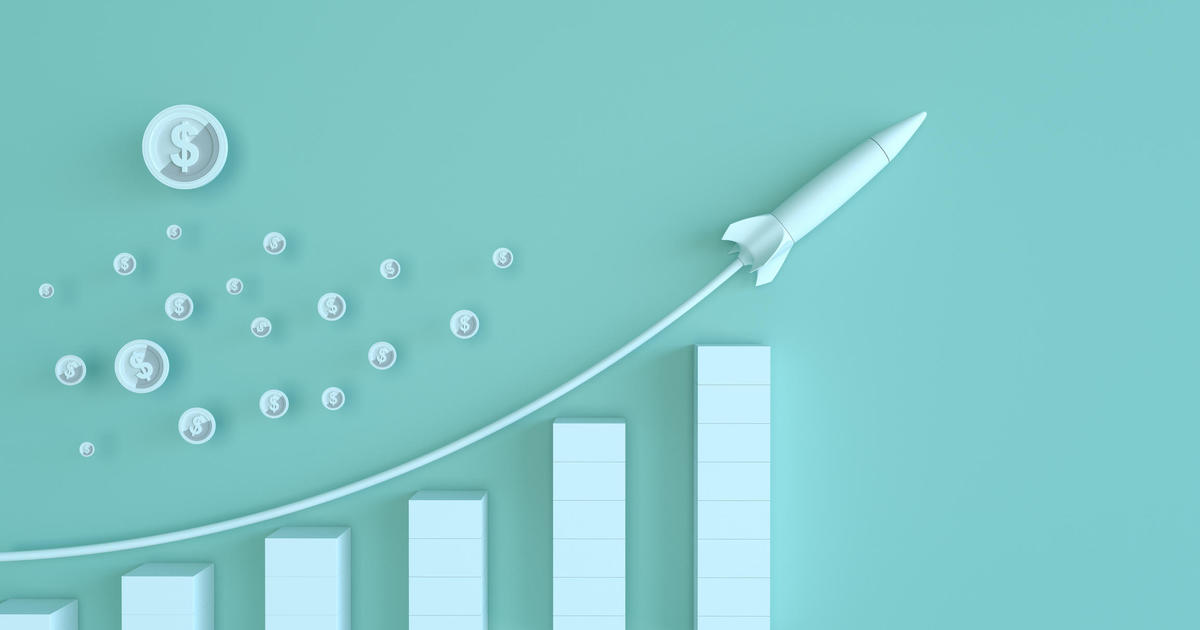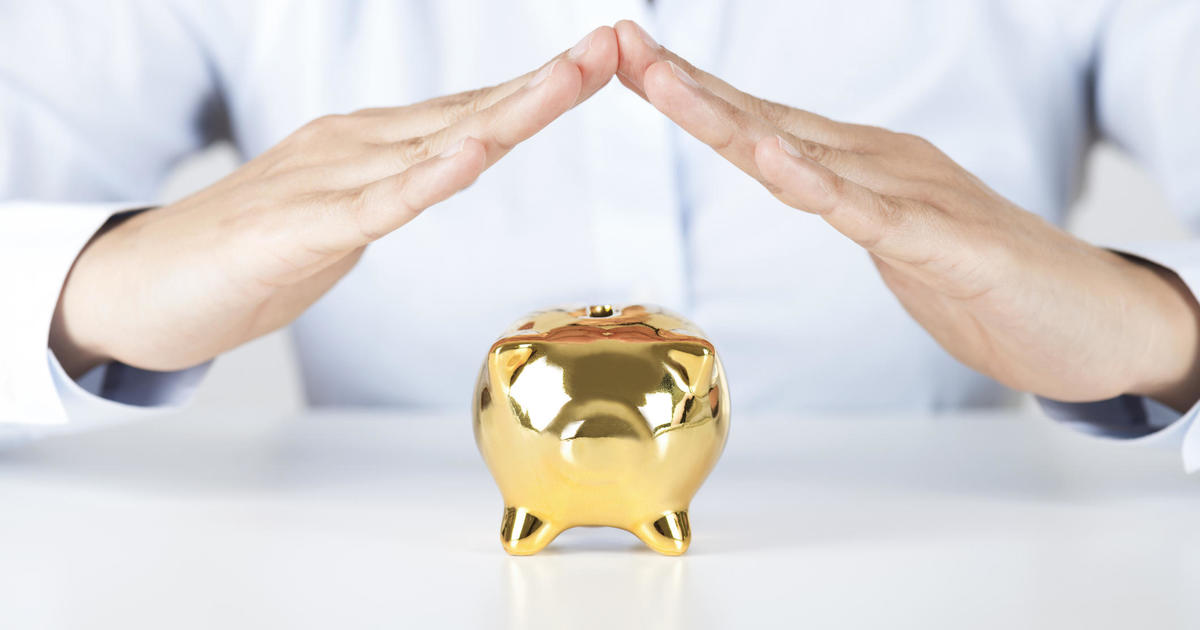What is stagflation, and should we be worrying about it?
The steepest inflation in four decades and severe product shortages have evoked comparisons to the economic doldrums faced by the U.S. in the 1970s. The echoes are reviving concerns about "stagflation," a term coined during that earlier period that has become synonymous with double-digit price increases, job losses and images of motorists queueing for gasoline.
"The danger of stagflation is considerable today," the World Bank warned this week. "Several years of above-average inflation and below-average growth are now likely."
The latest U.S. government data shows that consumer prices in May climbed 8.6% from a year ago — the biggest increase since 1981 and a blow to hopes that inflation has peaked. Here's what to know about stagflation and the potential risk it poses to the American economy.
What is stagflation?
In its strictest sense, stagflation refers to a stretch of rising unemployment coupled with sharply increasing prices.
Recently, though, economists have used the term more broadly to mean a period when inflation stays much higher than the Federal Reserve's 2% target and the economy slows or even shrinks. Even if unemployment doesn't increase, experts warn, a prolonged period surging costs and stagnant job growth could be devastating.
High prices squeeze household budgets and reduce consumer spending, while weak economic activity means businesses grow slowly, if at all, and corporate profits slump. The financial markets suffer, too, with stocks and bonds both declining in value, said Andrew Hunter, senior U.S. economist at Capital Economics.
"For the economy it's ultimately the worst of all worlds," Hunter said.
When did stagflation last occur?
In the 1970s, this toxic stew of high unemployment and high inflation persisted for over a decade as the U.S., U.K. and parts of Europe.
The OPEC oil embargo in 1973 and a drop in oil production after the 1979 Iranian revolution bookended the decade. After oil-exporting Arab nations stopped exporting oil to the U.S., the price at the pump quadrupled, and oil was in short supply. High energy prices drove up the cost of producing goods and slowed the economy. Between 1973 and 1975, the nation's unemployment rate doubled to 9%. Annual inflation peaked at 14%, and didn't decline substantially until the early 1980s after the Federal Reserve jacked up interest rates under the leadership of Paul Volcker.
"It was a very turbulent period for the economy — you had a number of recessions and overall GDP growth was pretty weak," Hunter said.
Are the 1970s about to repeat themselves?
As in the 1970s, supply shocks have significantly worsened inflation over the past 18 months. COVID-19 played a major role, with exporting nations shutting down or curbing production of cars, electronics and other goods and shipping companies taking months longer to deliver them.
Meanwhile, the Russian invasion of Ukraine in February, coming after a year of lower global oil production, has caused a spike in energy prices akin to that of the seventies, Hunter said.
By contrast, the U.S. economy has also evolved in important ways since the 1970s, making it less certain we'll see a repeat.
Notably, although energy costs remain important for industrialized countries, they matter less now than they used to. In the U.S., every dollar of economic output takes 70% less petroleum to produce than it did in the '70s.
"Modern economies are now much more efficient in their use of oil than they were in the 1970s, and a much larger share of GDP is composed of the production of services," Sandy Batten, senior economist at Haver, said in a recent presentation.
Policymakers today are also more attuned to inflation than they were four decades ago. Most central banks today have numerical targets, making it less likely they will miss runaway inflation and allow it to become "anchored" among consumers. Meanwhile, the economy continues to show resilience, even if the underpinnings of growth appear more fragile. Consumers continue to spend at a healthy clip despite higher prices and businesses continue to hire.
In short, the economy does not currently face stagflation, Hunter and other economists told CBS MoneyWatch, although slower growth is a concern looking ahead.
How likely is stagflation to happen again?
So far, economic data show that inflation may have peaked, while consumer spending remains strong. Online prices fell in May for the second month, Adobe Analytics reported this week. And wage increases, one factor behind rising prices, are also slowing.
But the war in Ukraine and a global food crunch could create conditions that lead to an acceleration in prices.
"Global factors pushing up on prices, particularly energy prices ... could potentially cause inflation to remain high or rise further, even if the domestic economy is starting to weaken," Hunter said.
And if price increases stay high for long enough, consumers could begin to expect constantly rising prices as the new normal and will change their behavior accordingly, creating a self-fulfilling inflation cycle.
Can the U.S. avoid stagflation?
There are two major ways that inflation pressures can ease, economists say. If supply-chain snags were to ease, making cars, electronics, food and fuel more plentiful, prices would fall quickly, said Chester Spatt, professor of finance at Carnegie Mellon University's Tepper School of Business.
As far as the Federal Reserve is concerned, the best way to head off stagflation is to raise interest rates high enough to dampen consumer demand. That's what the Fed did in the 1980s under Volcker, and while he is hailed as a hero among central bankers, a series of recessions that ensued, as the Fed put conquering inflation over job growth, made that period a painful one for most Americans.
"They don't have that many tools to fix the supply-chain problems. But that means the demand adjustments need to be even harder," Spatt said. "I think we're going to see higher interest rates to reduce demand — reduce demand by companies, reduce demand by consumers."
So far this year, the Fed has increased its target interest rate twice, and it appears ready to hike it at least three more times before the end of 2022. Higher borrowing costs have already had an effect on the housing market, with mortgage rates rising from about 3% in January to 5% today. That's dramatically reduced mortgage applications while slowing home purchases, data show.
The risk is that the Fed's rate hikes end up quashing growth, rather than merely dialing it back, triggering a recession.
"They need to reduce demand. But with inflation at 8%, they need to reduce demand a lot," Spatt said. "Can they do it without tipping into recession? That's a huge challenge."



